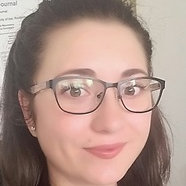Integrated Approaches to Eco-Friendly Processes for Persistent Pollutants Contamination
A special issue of Processes (ISSN 2227-9717). This special issue belongs to the section "Environmental and Green Processes".
Deadline for manuscript submissions: 30 September 2024 | Viewed by 6276
Special Issue Editors
Interests: heavy metals; environmental biotechnology; bioremediation; biosorption and bioaccumulation; environmental impact assessment
Special Issues, Collections and Topics in MDPI journals
Interests: life cycle assessment; waste management; bioremediation; environmental biotechnology
Interests: persistent organic pollutants; heavy metals; biosorption and bioaccumulation; phytoremediation; process modelling and optimization
Special Issue Information
Dear Colleagues,
Due to their highly toxic effects on the environment, aquatic organisms and human health, the removal or degradation of persistent pollutants from our environment has been at the center of researchers’ attention. Unfortunately, some conventional methods used for wastewater treatment or soil remediation proved to be unfeasible due to their considered high costs and environmental impacts. We consider it opportune to further proceed in the investigation of non-conventional, low-cost and eco-friendly processes, such as bioremediation processes. These processes have proven their efficiency at the laboratory scale, while their upscaling still remains in a black box. Bioremediation, treated in an integrated manner by considering the synergy between two processes, could also be a success for technology transfer from the laboratory to pilot scale. Additionally, environmental, human health and economic impacts or design costs of bioremediation processes for technology transfer in treatment facilities still require investigation and our full attention. For example, by integrating life cycle assessment and life cycle cost methodologies for wastewater treatment processes in an early design phase, or a pre-design phase, we can identify justified environmental and economic design strategies linking to sustainable perspectives, not only from the industry point of view but also from the consumer point of view. These methodologies can be applied to the evaluation of products/processes/waste management. The aim of this Special Issue is focused on improving the knowledge within this field, as well as open new views and perspectives.
This Special Issue titled “Integrated Approaches to Eco-Friendly Processes for Persistent Pollutants Contamination” seeks high-quality works focusing on the latest novel advances in bioremediation technology. Topics include, but are not limited to, the following:
- Remediation techniques for persistent pollutants;
- Integrated remediation processes toward persistent pollutant removal/recovery;
- Low-cost and eco-friendly processes for wastewater treatment and soil remediation;
- Life cycle assessment and life cycle cost of bioremediation processes;
- Process modeling and optimization.
Dr. Raluca Maria Hlihor
Dr. Isabela Maria Simion
Dr. Mihaela Rosca
Guest Editors
Manuscript Submission Information
Manuscripts should be submitted online at www.mdpi.com by registering and logging in to this website. Once you are registered, click here to go to the submission form. Manuscripts can be submitted until the deadline. All submissions that pass pre-check are peer-reviewed. Accepted papers will be published continuously in the journal (as soon as accepted) and will be listed together on the special issue website. Research articles, review articles as well as short communications are invited. For planned papers, a title and short abstract (about 100 words) can be sent to the Editorial Office for announcement on this website.
Submitted manuscripts should not have been published previously, nor be under consideration for publication elsewhere (except conference proceedings papers). All manuscripts are thoroughly refereed through a single-blind peer-review process. A guide for authors and other relevant information for submission of manuscripts is available on the Instructions for Authors page. Processes is an international peer-reviewed open access monthly journal published by MDPI.
Please visit the Instructions for Authors page before submitting a manuscript. The Article Processing Charge (APC) for publication in this open access journal is 2400 CHF (Swiss Francs). Submitted papers should be well formatted and use good English. Authors may use MDPI's English editing service prior to publication or during author revisions.
Keywords
- bioremediation
- heavy metal
- persistent organic pollutants
- life cycle assessment
- life cycle cost







